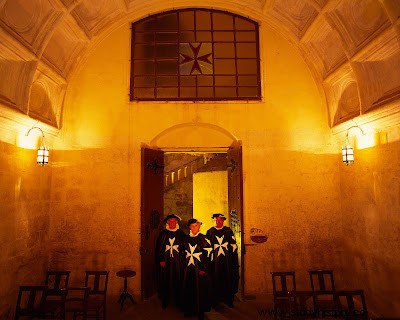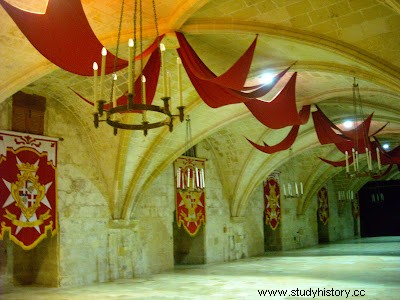This post is due to the collaboration of Norma Gabaldón Baldisa .
One of the main characteristics of Malta is the influence and the cultural, architectural and social vestiges that the Order of Saint John left on the Island in its more than 250 years of presence.
The Sovereign Military and Hospitaller Order of Saint John of Jerusalem, of Rhodes and of Malta, better known as the Order of Malta, founded in the 11th century, was the first military order. The knights had to prove their noble lineage (ancestral rule in force until 1990) and were distributed in national chapters called langues, whose supreme head was the Grand Master. After the fall of Jerusalem at the end of the 13th century, the knights built a fortress on the island of Rhodes. Although Grand Master Pierre d'™Aubusson was victorious in the Ottoman siege of Rhodes in 1480, the Turks expelled the knights in 1522.

In exchange for the annual tribute of a live Maltese falcon, Holy Roman Emperor Charles V offered these knights the Maltese islands, settling in Malta in 1530. They fought the Turks during the Great Siege of 1565, built the walled city La Valletta (named after Grand Master Jean Parissot de la Vallette) and erected bastions on the islands.
But during the twelfth and thirteenth centuries, as the Ottoman threat receded, the Order fell into decline. When the order landed on the Maltese coast in 1798, the knights submitted to the French without resistance. They were banished from Malta, but the order refused to disband. Although they remain stateless, the Knights maintain their charitable and religious work around the world.
The symbol of the Order of Malta is the eight-pointed cross, so characteristic and present throughout the country. Apparently the eight points symbolize the eight beatitudes and the eight langues of the Order. The four arms of the cross would represent the four cardinal virtues:strength, justice, temperance and perseverance. Although the cross is traditionally associated with the foundation of the Order in the 11th century, this icon did not become widespread until the mid-16th century.

Throughout the archipelago there are buildings, monuments and streets that recall that glorious time of Malta and are currently used as offices of official bodies or museums.
A clear example is the Grand Master's Palace in Valletta. Built between 1573 and 1578 by Gerolamo Cassar , it is an elegant palace that today is the seat of the Maltese presidency and Parliament, but for more than 200 years it was the residence of the grand master, supreme head of the knights of the Order of Saint John.
Another building built by the same architect as the Grand Master's Palace is the Malta Co-Cathedral which shares honor and importance with St. Paul's Cathedral in the city of Mdina. Behind the austerity of its external walls hides a true masterpiece of Baroque art, with frescoes by Matia Preti, paintings by Caravaggio and frescoes by Rubens.
Traveling to Malta is like a leap in history and especially strolling through La Valletta whose cobbled streets at sunset invite you to imagine being a Medieval lady or knight.
Facebook group «Travel to Malta»
